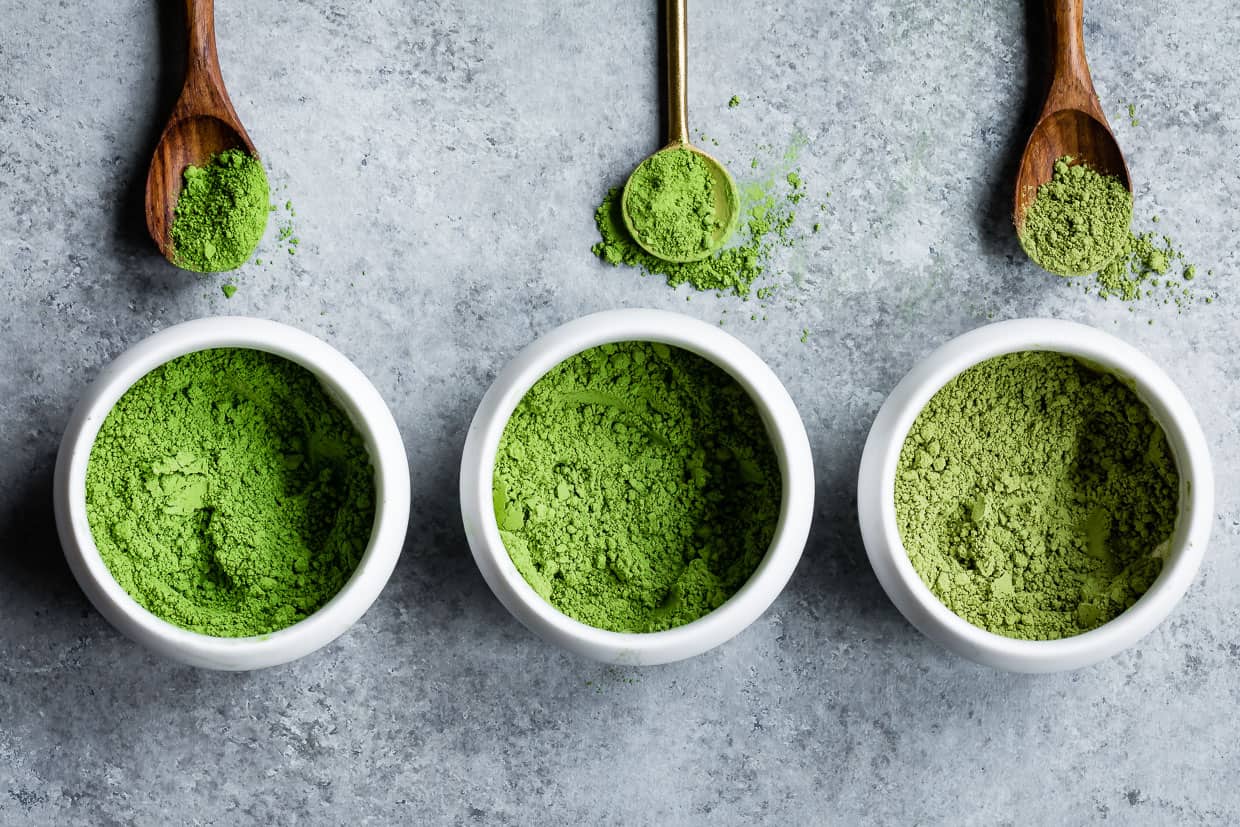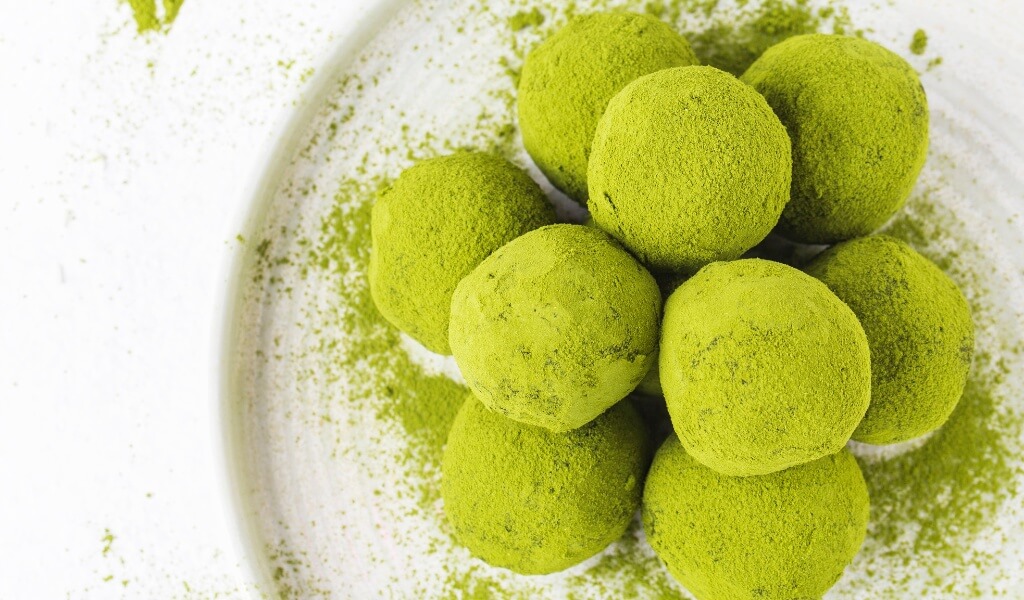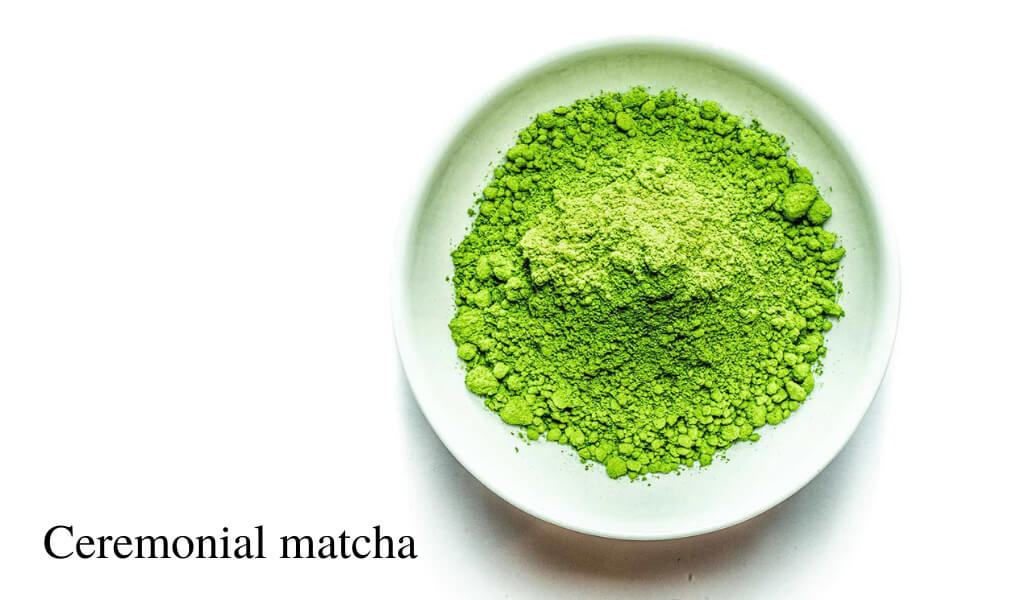I am thrilled to guide you through the captivating realm of types of Matcha. Whether you’re a seasoned matcha enthusiast or just starting your matcha journey, understanding the different varieties available is essential for experiencing the full spectrum of flavors and qualities that matcha offers.
Introduction to Matcha Tea
The deep green powder has a unique allure that’s impossible to resist, and the ritual involved in its preparation brings a sense of peace and mindfulness to my daily routine.
What Makes Matcha Unique
Matcha stands out from typical green teas because it comes from tea leaves grown in the shade, enhancing their chlorophyll content and giving matcha its unique, vivid green hue. These leaves are ground into a fine powder, so when you enjoy matcha, you’re ingesting the entire leaf, not merely a steeped infusion. This results in a more robust flavour and a greater concentration of the tea’s valuable antioxidants, vitamins, and minerals.
I’ll go more deeply into the world of matcha in the future parts, examining the numerous varieties, how to pick the best one for you, and how to prepare and consume it to its fullest.
Now, let me explain why there are various grades of matcha available.
Why Are There Different Grades of Matcha?
Just as many tea varieties are stemming from different plants, grinding, and steeping methods, matcha also showcases an array of grades. I learned this firsthand when I visited a native Japanese tea grower on a trip.
He explained how matcha tea is crafted using specific tea leaves, grown during particular seasons and harvested within a narrow time frame.
This intricate process leads to various tastes, textures, and other nuances that characterize matcha grades.
One of the key differences lies in the harvest times. Like wine, matcha sees a few harvest times throughout the growing season. The matcha powder recipes we cherish, sourced from these harvests, is categorized into distinct grades based on when the leaves are plucked from the matcha plants.
The grinding methods used also influence matcha grading. The way the leaves are ground can impact the flavor, texture, and more.
For instance, the best ceremonial grade matcha is typically stone ground or hand ground, leading to a smooth, fine texture. On the other hand, culinary matcha may use different grinding methods, often resulting in a coarser grind.
Many factors, such as taste, hue, and preparation duration, play a role in deciding the key attributes. However, it’s important to note that categorization doesn’t automatically signify that one matcha is superior in taste or quality.
So, let’s dive into the different types of matcha you can explore and enjoy.
Read More:
- Benefits of drinking matcha in the morning
- Let’s check out the article below: caffeine in matcha vs coffee
- Why is matcha good for you?
Different types of matcha: My Journey Through the Diverse Matcha Varieties
Matcha can be categorized into three types: ceremonial, culinary, and Premium. Ceremonial matcha, made from the first harvest leaves, has a smooth flavor ideal for traditional tea preparation and is more expensive.
| Matcha Type | Overview and Use Cases | Taste and Color Profile |
|
Ceremonial Grade
|
Highest quality used in Japanese tea ceremonies. |
Vibrant, brilliant green. Smooth, slightly sweet.
|
| Made from young leaves, stems and veins removed. | Delicate flavor. Not used for cooking. | |
|
Premium Grade
|
Middle-ground between culinary and ceremonial grades. |
Bright green. Slightly sweet, vegetal taste.
|
| Suitable for cooking and drinking. | Less bitter than culinary grade. | |
|
Culinary Grade
|
Versatile ingredient for cooking, baking, and beverages. |
Robust, slightly bitter taste. Less vibrant green.
|
| Affordable choice for beginners or matcha enthusiasts. | Adds unique flavor and color to recipes. |
Culinary Grade Matcha

Among many matcha types, culinary vs ceremonial matcha are my preference. When I first started experimenting with matcha in my kitchen, culinary-grade matcha was my go-to. As the name suggests, this grade is perfect for cooking and baking.
Culinary-grade matcha is a flexible ingredient that gives a variety of dishes a distinctive flavor and color. This ingredient can improve your meals, whether you’re creating a matcha latte, baking a matcha-infused dessert, or boosting your morning smoothie.
Overview and Use Cases
Culinary grade matcha tends to be more robust and bitter than the other grades, allowing its flavor to shine when combined with other ingredients. I’ve had a lot of fun experimenting with it in recipes, from matcha pancakes to the best matcha recipe.
It’s also often less expensive, making it a perfect option whether you’re just getting into matcha or a seasoned matcha fan who likes adding it to your meals.
The Taste and Color Profile
The taste of culinary-grade matcha is bold with a slight bitterness, and its color tends to be a less vibrant green than premium or ceremonial grade.
Don’t let this discourage you, though; its potent matcha flavor makes it the perfect addition to your culinary creations!
Premium Grade Matcha
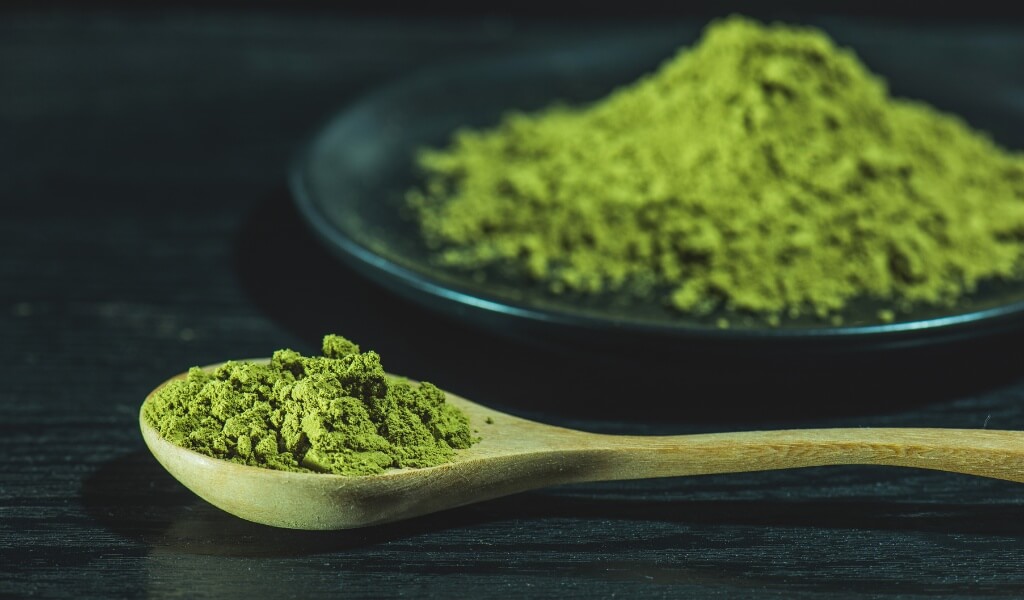
Premium-grade matcha might be the ticket if you’re ready to step up your matcha game. This was the next step in my matcha journey, opening up a whole new world of flavor.
Overview and Use Cases
Premium grade matcha is an excellent middle-ground between culinary and ceremonial grades. It’s a bit more refined and less bitter, making it suitable for cooking and drinking. It’s my preferred choice for a matcha latte, as it pairs beautifully with milk or a dairy-free alternative, offering a smoother, more delicate flavor.
The Taste and Color Profile
Premium grade matcha has a brighter green color and a slightly sweet, vegetal taste. It’s less bitter than the culinary grade, which makes it a great option if you’re looking to enjoy matcha in its traditional, whisked form but are still deciding whether to invest in the ceremonial grade.
Ceremonial Grade Matcha
We come to ceremonial grade matcha, the crème de la crème of matcha teas. This is the highest quality matcha traditionally used in Japanese tea ceremonies.
Overview and Use Cases
Ceremonial grade matcha is made from the youngest tea leaves, with the stems and veins entirely removed.
The outcome is a finely ground, silky powder that’s perfect when mixed with hot water. It’s not usually employed for cooking because its delicate flavors would vanish when blended with other ingredients. Instead, it’s meant to be enjoyed independently, enabling the consumer to fully savor its intricate taste.
The Taste and Color Profile
Ceremonial grade matcha is a vibrant, brilliant green. It has a smooth, velvety texture and a delicate, slightly sweet flavor with hardly any # The message was cut off. I will continue where it left off.
Now, let’s compare these types of matcha and see how they differ.
Difference between Ceremonial and Culinary Matcha
The way these two matcha teas are brewed is the primary distinction between them. Matcha of the ceremonial grade is excellent for stirring with hot water on its own, while matcha of the culinary grade is excellent for blending into smoothies, lattes, and other dishes.
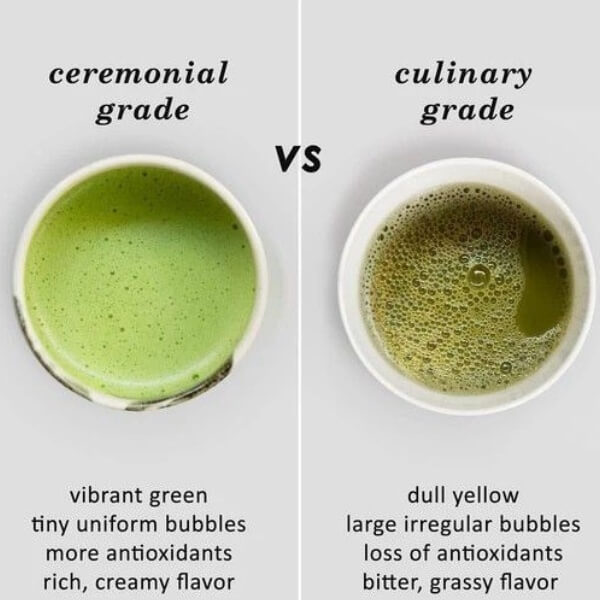
Compare types of matcha: How They Are Different With Others
If you’re like me, you probably enjoy the many delicious facets of matcha tea. But when choosing between culinary, premium, and ceremonial grades, things can get complex. Let’s break it down according to quality, use case, price, taste, and color.
| Culinary Grade Matcha | Premium Grade Matcha | Ceremonial Grade Matcha | |
| Quality | Good | Better | Best |
| Use Case | Cooking/Baking | Drinking/Cooking | Traditional Tea Drinking |
| Price | $ | $$ | $$$ |
| Taste | Bold, Bitter | Slightly Sweet, Vegetal | Delicate, Slightly Sweet |
| Color | Less Vibrant Green | Bright Green | Vibrant, Brilliant Green |
In the end, the best type of matcha is the one that suits your taste and your budget. Don’t be afraid to experiment and find your personal matcha favorite!
I understand you may have some questions, so here are a few frequently asked questions about matcha tea.
The bottom line
I trust this guide, which delves into gourmet, premium, and ceremonial grades, has broadened your understanding and deepened your love for this extraordinary tea.
Remember, whether it’s for baking, daily sipping, or a special tea ceremony, there’s a type of matcha just for you.
I’m Shanna Smith, I’m from spiriteadrinks.com
FAQs
Is matcha a type of green tea?
Yes, matcha is a type of green tea. However, it’s grown and processed differently, giving it a unique taste, texture, and higher concentration of antioxidants than regular green tea.
Can I use culinary-grade matcha for tea?
Yes, you can use culinary grade matcha for tea, but it may not have the delicate, sweet flavor found in ceremonial and premium-grade matcha. The culinary grade is often more robust and better suited for cooking and baking.
What is the Japanese tea ceremony?
The Japanese tea ceremony, also known as “chanoyu”, “sado”, or “chado”, is a traditional ritual influenced by Zen Buddhism in which powdered green tea, or matcha, is ceremonially prepared and served to others.
What is the difference between matcha and regular green tea?
The key difference between matcha and regular green tea lies in their preparation. Matcha involves consuming the entire powdered leaf, while regular green tea steers the leaves. This results in matcha having a richer flavor and higher antioxidant content.
Who introduced matcha to Japan?
Matcha was introduced to Japan by a Buddhist monk named Eisai around the end of the 12th century. He is credited with popularizing the country’s tea and Zen meditation practice.
Where is the birthplace of matcha?
Matcha originated in China during the Tang Dynasty, but it was in Uji, Kyoto, Japan where the tea was cultivated and perfected into the matcha we know today. Uji is still renowned for producing some of the highest-quality matcha.
When was matcha first used in tea ceremonies?
Matcha started being used in Japanese tea ceremonies, or “chanoyu”, around the 15th century. The ceremony emphasizes mindfulness and is considered a spiritual practice in the Zen Buddhist tradition.
What role did Zen Buddhism play in the history of matcha?
Zen Buddhism played a significant role in the history of matcha. The monks found that drinking matcha helped them stay alert and calm during long periods of meditation. It’s also during Zen tea ceremonies that the cultural significance of matcha was solidified.
What’s the significance of the matcha whisk or ‘chasen’?
The matcha whisk, or “chasen”, is a crucial tool in traditional matcha preparation. Crafted from a single piece of bamboo, it’s used to mix the matcha powder and hot water into a frothy, smooth tea.
Why is matcha traditionally consumed in a bowl?
Matcha is traditionally consumed in a bowl, or “chawan”, to allow for the proper whisking of the tea and to fully appreciate its vibrant color, aroma, and taste. The bowl also plays a central role in the Japanese tea ceremony.
What is the ‘Way of Tea’ in Japan?
The “Way of Tea”, or “Chado”, is a Japanese cultural practice involving the ceremonial preparation and presentation of matcha. It’s rooted in Zen Buddhism and symbolizes harmony, respect, purity, and tranquility.
What is the ‘first flush’ in matcha production?
The “first flush” in matcha production refers to the first picking of the tea leaves in the spring. These leaves produce the highest quality matcha, often used in ceremonial grade matcha due to its bright green color and delicate flavor.
What are ‘shade-grown’ tea leaves in matcha production?
“Shade-grown” tea leaves are used in matcha production. The tea plants are covered about 20-30 days before harvest to block out sunlight. This boosts chlorophyll levels and gives matcha its distinct vibrant green color and increased nutritional value.
Who are some famous historical figures associated with matcha?
Eisai, a Buddhist monk, is one of the most famous figures associated with matcha. He brought the tea from China to Japan. Sen no Rikyu, a 16th-century tea master, also significantly influenced the traditional Japanese tea ceremony, incorporating matcha.
Difference between ceremonial and culinary matcha?
Ceremonial Grade Matcha is brighter and has a deeper green color because it is derived from the youngest tea leaves, which contain higher levels of chlorophyll. On the other hand, Culinary Grade Matcha has a more muted green color that is still visually appealing since it is made from older tea leaves exposed to more sunlight.
I’m Shanna, creator of Spiritea Drinks. I’m all about teaching people to grow their own food, tea, cook what they harvest, and eat with the seasons.

